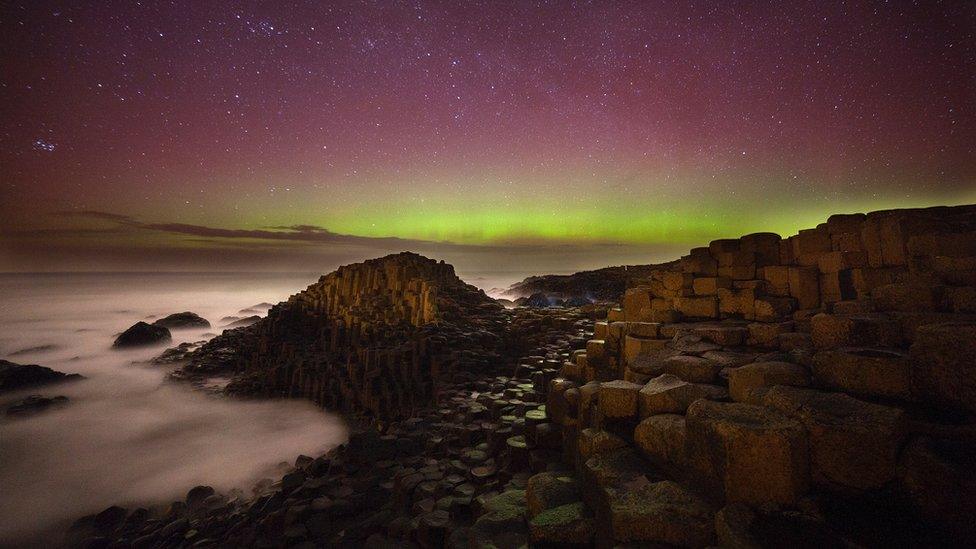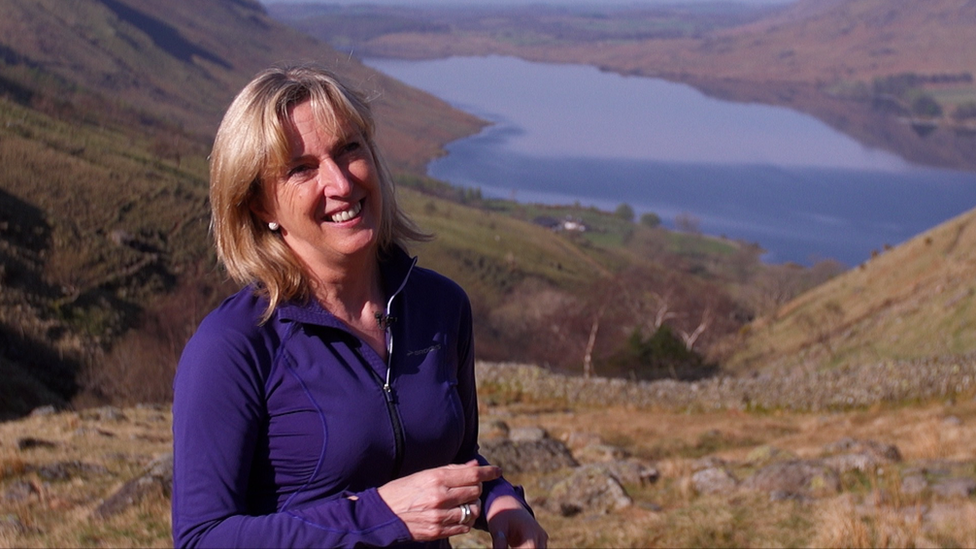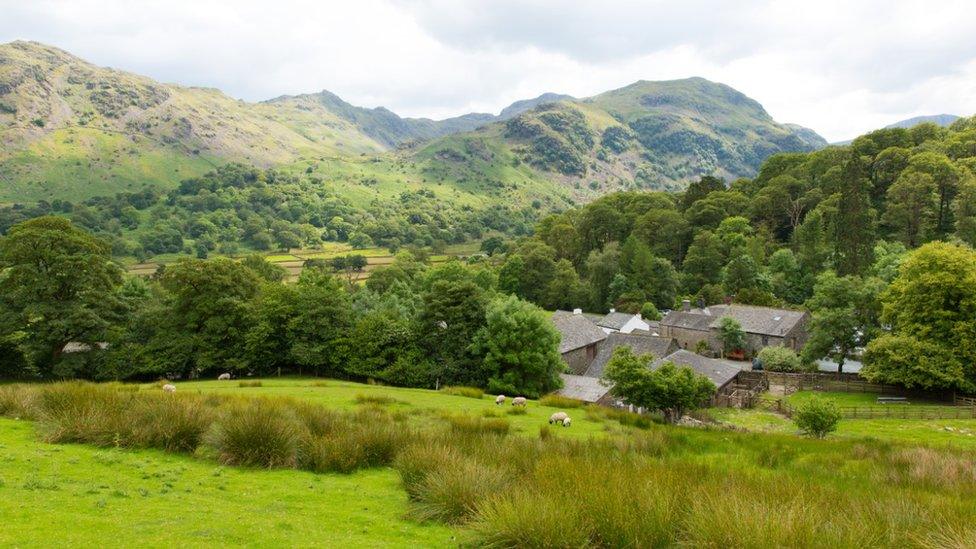National Trust defends Giant's Causeway charging policy
- Published
There are claims signs by the Giant's Causeway are misleading visitors into thinking they have to pay
The head of the National Trust has defended its charging policy at the Giant's Causeway visitor centre.
There have been complaints that official signs have misled people into thinking they have to pay to visit the world-famous stones in County Antrim.
The trust's director general said that money raised was used for the upkeep of the site and other properties it looks after in Northern Ireland.
Hilary McGrady said the trust was "trying to be open" about the signs.
Some walkers and nearby residents have previously complained about other signs that tell people they are accessing the north coast tourist spot with the National Trust's "permission".
Mrs McGrady, who is originally from Northern Ireland, told the BBC's Inside Business programme: "I'm really clear that anybody that wants to walk to the Causeway stones for free can walk to the Causeway stones.
"But somebody has to pay for the thing to be looked after - it doesn't come free.

Money raised at the Giant's Causeway is used to maintain the site, says the National Trust
"The visitor centre and the visitor experience that you get doesn't come free.
"So that's why we charge for the visitor centre and we charge for the car park.
"That's what you're paying for - you're not paying for the stones."
'Looking after special places'
The National Trust is the UK's biggest landowner and last year generated almost £600m in income from membership, property and legacies.
It has assets of about £1.3bn.
A recent report suggested the Giant's Causeway contributed more than £480m to the Northern Ireland economy last year.
Mrs McGrady took over as head of the National Trust this year and said it was a privilege to lead the organisation.

The National Trust should be pushing boundaries, says Hilary McGrady
"One of the things that I have tried really hard to do in the nine months I've been in the job is be clear about what the trust is about," she added.
"I would acknowledge that I think over a period of time the press and others were getting confused about what the National Trust stood for.
"One day we were talking about climate change, and the next day we were talking about wind farms, the next day we were talking about LGBTQ, and it was really quite hard to figure out what we were about."
Mrs McGrady said the vast majority of the population loved the National Trust for "looking after special places".
"I wanted to bring us back to the root of that - that is what we do every day," she said.
"Of course we will, and we should, be pushing the boundaries, like any cultural organisation.
"We should be bringing forward the stories that people really want to hear, we should make sure we're relevant but fundamentally we will keep looking after beautiful places for ever, for everyone.
"And I want to look after them even better, actually - I want our standards to rise."
- Published20 April 2018
